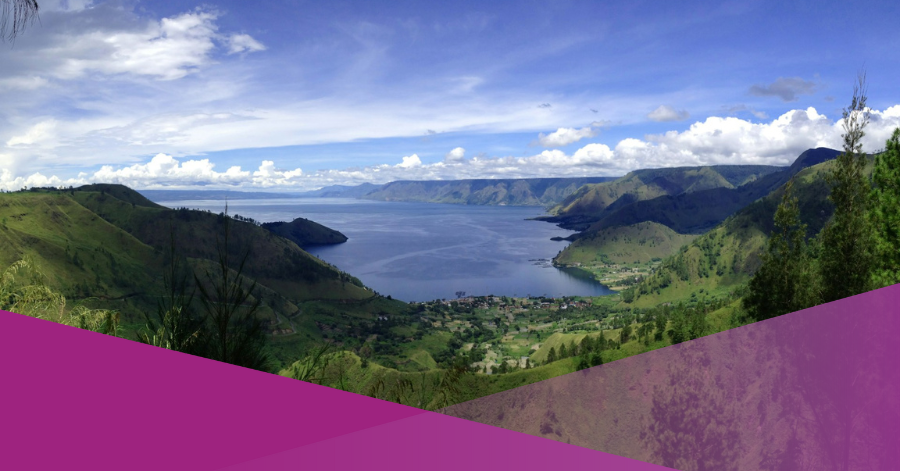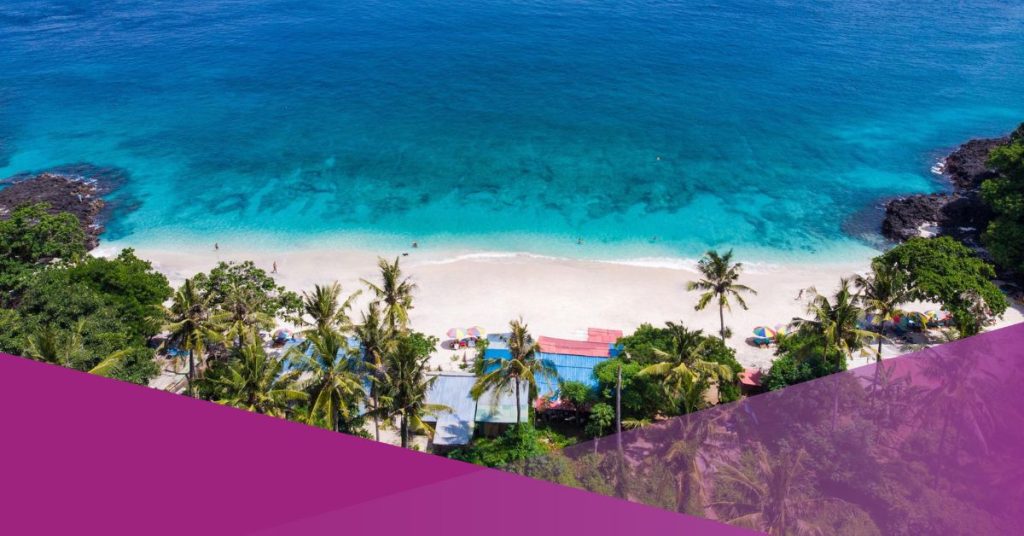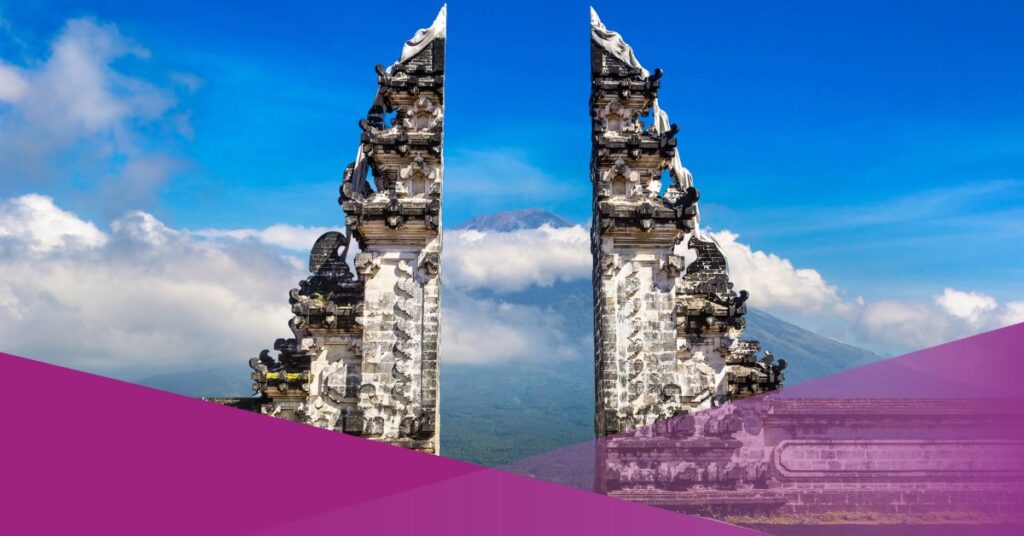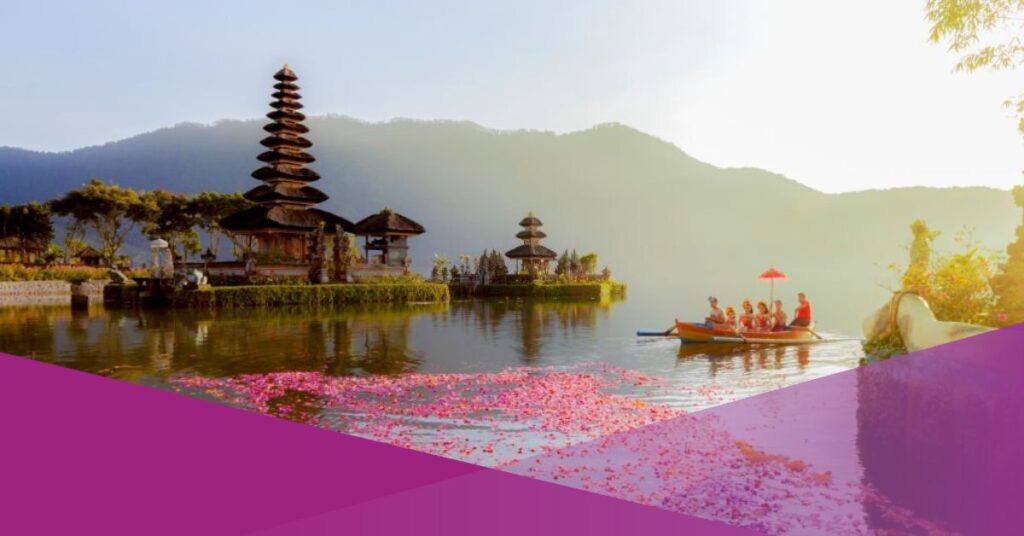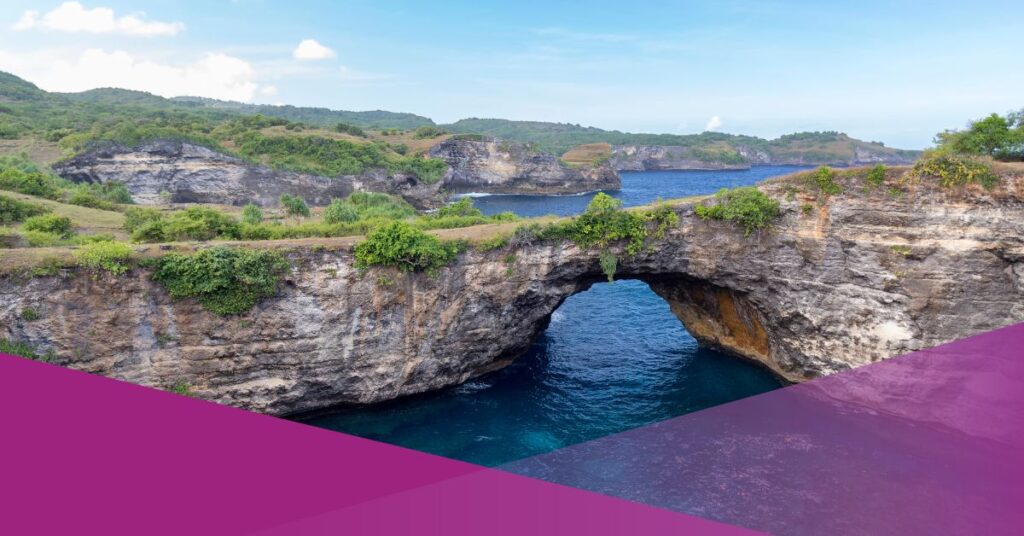Nestled in north Sumatera, Indonesia, the largest Lake Toba or Danau Toba, stands as one of the world’s most captivating and unique natural wonders. This ancient volcano lake, formed around 75,000 years ago following a massive eruption, is the largest in Indonesia. Lake Toba is not just a geographical marvel; it is deeply ingrained in the cultural and historical fabric of the region, making it a must-visit destination for travellers seeking a blend of natural beauty and cultural richness.
Cradle of the Earth’s Power and Geographical History
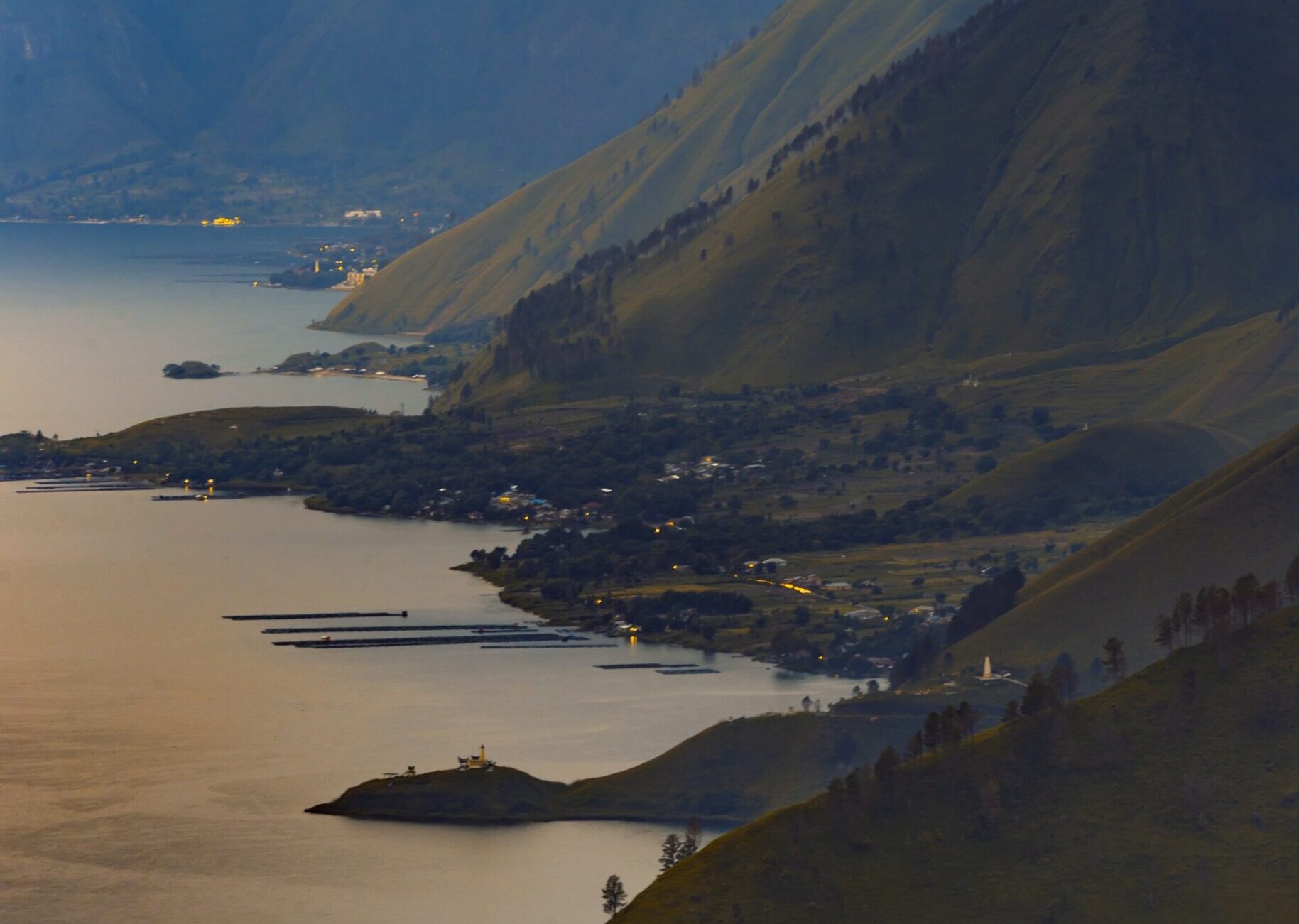
Lake Toba is situated within the caldera of a supervolcano, which is essentially a massive crater left behind by a colossal volcanic eruption. The lake covers an area of about 1,707 square kilometres, with a maximum depth of around 450 meters, making it one of the deepest lakes in the world. The surrounding landscape is characterized by beautiful green hills and mountains, creating a stunning sunrise backdrop that adds to the allure of the lake.
The lake was formed during the largest volcanic eruption in the last 25 million years, known as the Toba Catastrophe. The eruption had global consequences, affecting climate and human populations across the planet. The caldera that remains today is a testament to the earth-shattering power of this ancient event.
Cultural Significance
Lake Toba holds immense cultural significance, particularly for the Batak people who inhabit the region. The Batak are an ethnic group with a rich heritage, and their traditions and customs are deeply intertwined with the lake and its surroundings.
On Samosir Island, situated in the middle of Lake Toba, visitors can explore traditional Batak villages that provide a glimpse into the unique cultural practices of the community. Traditional houses, adorned with intricate carvings, dot the landscape, and visitors are often welcomed with warm hospitality. The Batak people have a rich oral tradition, and storytelling plays a vital role in passing down their history and folklore.
Tourist Attractions Around Lake Toba Must-Added to Your Bucket Lists
Apart from its cultural and geological significance, Lake Toba offers many tourist activities. The lake is a haven for water-based activities such as swimming, fishing, and boating. The surrounding hills and mountains provide excellent hiking opportunities, offering panoramic views of the expansive lake.
Holbung Hills
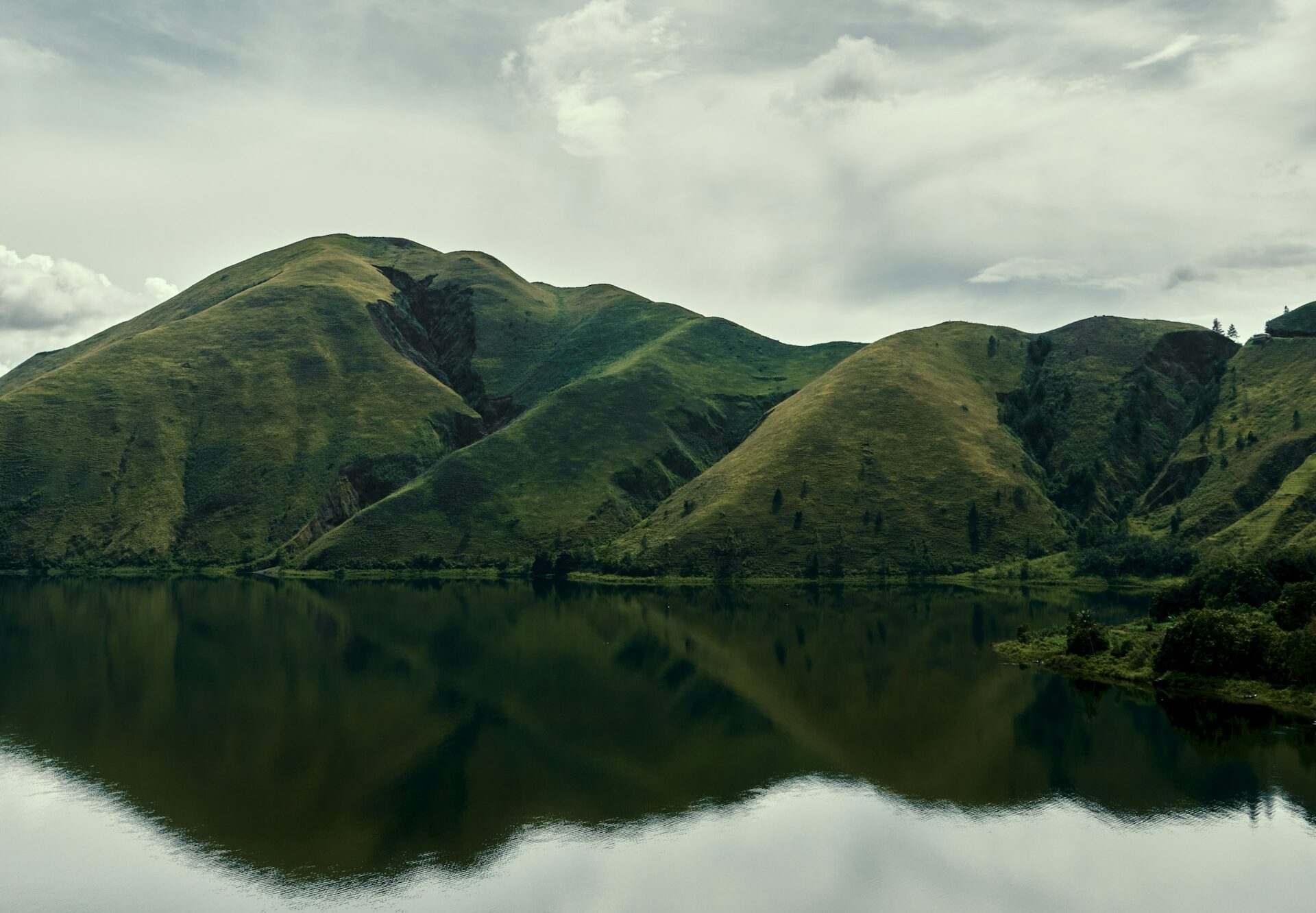
The name “Bukit Holbung” translates to “Holbung Hill” in English. Rising majestically from the surrounding landscape, this hill offers panoramic views of spacious greenery, rolling hills, and distant mountains that seem to stretch into infinity. Its verdant slopes are adorned with rich of tropical vegetation, including towering trees, colourful wildflowers, and exotic flora endemic to the region.
One of the most exciting aspects of Bukit Holbung is its spiritual significance to the local Batak people, who have inhabited the area for generations. The Batak culture is steeped in tradition, folklore, and a deep reverence for nature. For the Batak community, Bukit Holbung holds sacred importance, serving as a place of worship, reflection, and communal gatherings.
At the summit of Bukit Holbung, visitors can find ancient stone megaliths and traditional Batak houses, which stand as silent witnesses to centuries of history and tradition. These megalithic structures are believed to date back to prehistoric times and are shrouded in myth and legend. They serve as reminders of the ancestral roots of the Batak people and their enduring connection to the land.
Sippan Village
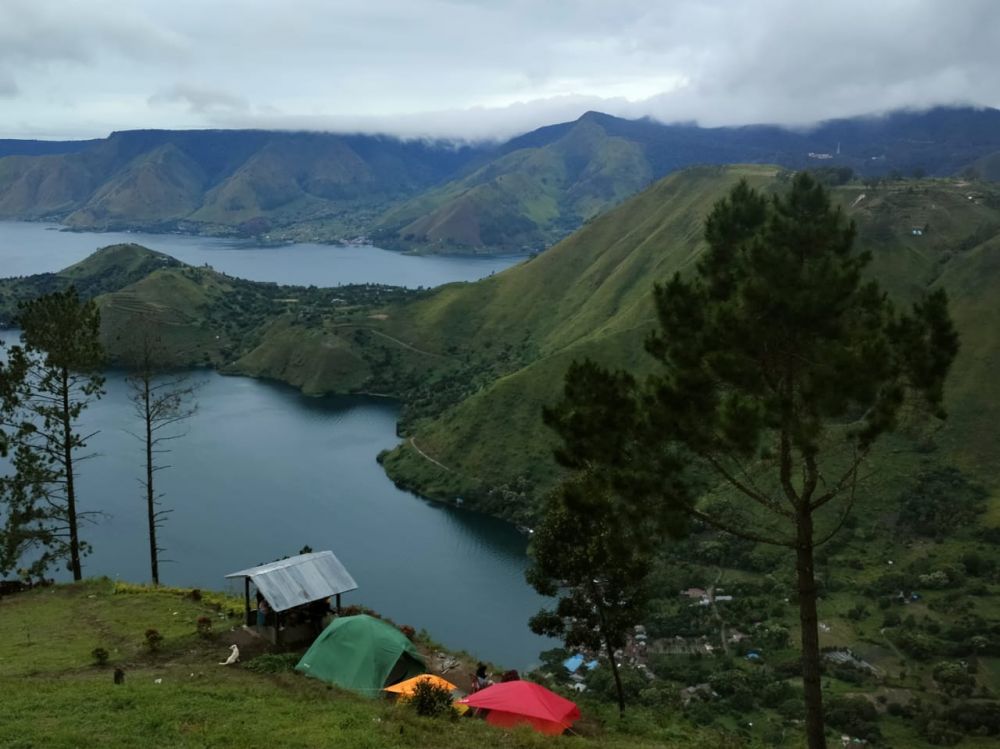
Located in the stunning region around the lake Toba Samosir, Desa (village) Sippan sits on the shores of the mesmerizing Lake Toba, one of the largest volcanic lakes in the world. This village encapsulates the essence of rural life in Indonesia while offering visitors a glimpse into its unique heritage and traditions.
One of the highlights of a visit to Desa Sippan is the opportunity to witness the famous Batak dance performances, which showcase the community’s artistic prowess and passion for storytelling. Through graceful movements and elaborate costumes, dancers bring to life age-old legends and myths passed down through generations, offering spectators a mesmerizing glimpse into Batak culture and mythology.
Situmurun Waterfall ( Most Magnificence in Indonesia )
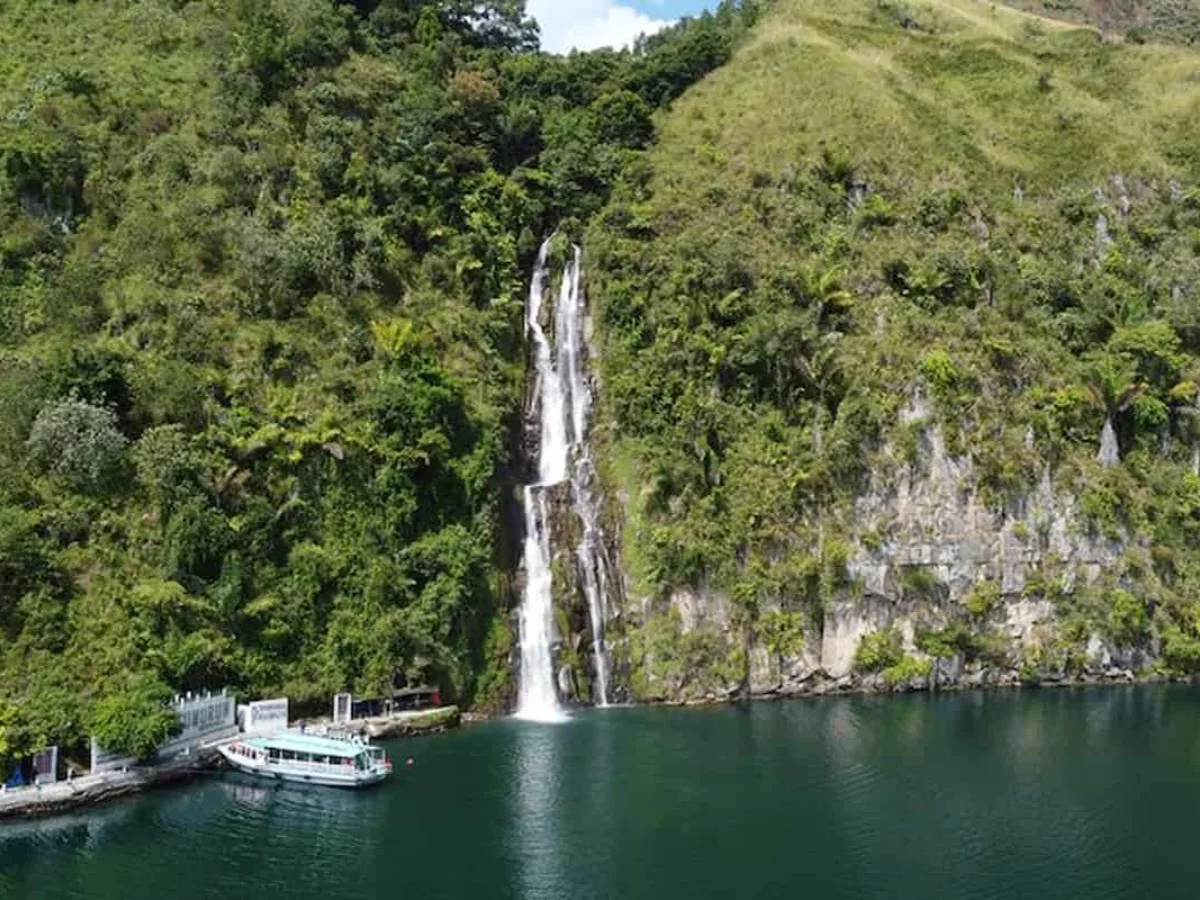
The name “Situmurun” is derived from the local Batak language, with “Situ” meaning lake and “Murun” referring to the colour green. True to its name, Situmurun Waterfall cascades gracefully into a pool below, surrounded by dense foliage and verdant vegetation, creating a stunning contrast against the crystal-clear waters.
The journey to Situmurun Waterfall is an adventure in itself, as your trip to Lake Toba navigates through winding paths and verdant forests, accompanied by the soothing sounds of nature. As the waterfall comes into view, its grandeur leaves travellers in awe of its magnificence. The water plunges from a towering height, creating a mesmerizing spectacle that captivates the senses and invigorates the soul.
Sibea-bea Hills
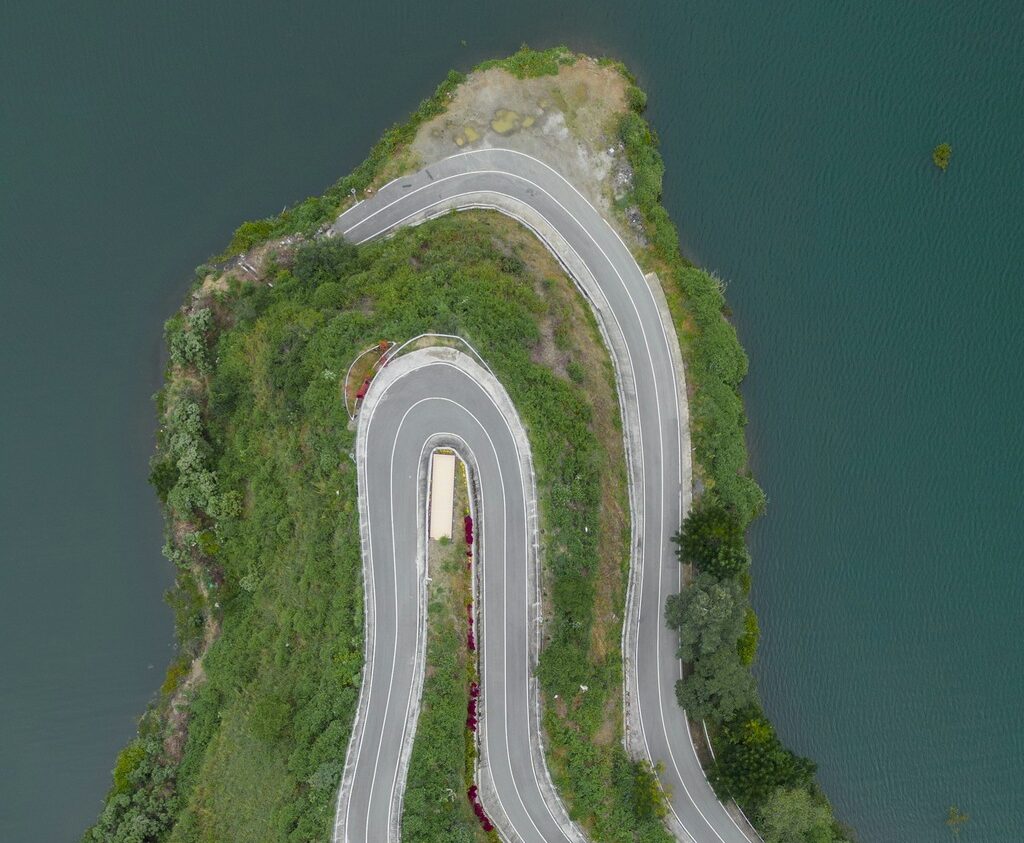
Sibea-bea offers various outdoor activities for those seeking adventure to suit every taste. Visitors can embark on leisurely boat rides across Lake Toba, exploring secluded coves and hidden beaches along the shoreline. Fishing enthusiasts can cast their lines into the lake’s bountiful waters, hoping to reel in a prized catch while soaking in the tranquil ambience of their surroundings.
Hiking trails wind their way through the lush forests and rolling hills surrounding Sibea-bea, offering breathtaking views and opportunities to encounter the diverse flora and fauna of the region. Whether trekking to nearby waterfalls, exploring ancient caves, or simply strolling through the village’s charming streets, there is no shortage of natural wonders in this idyllic corner of North Sumatra.
Paepira Village
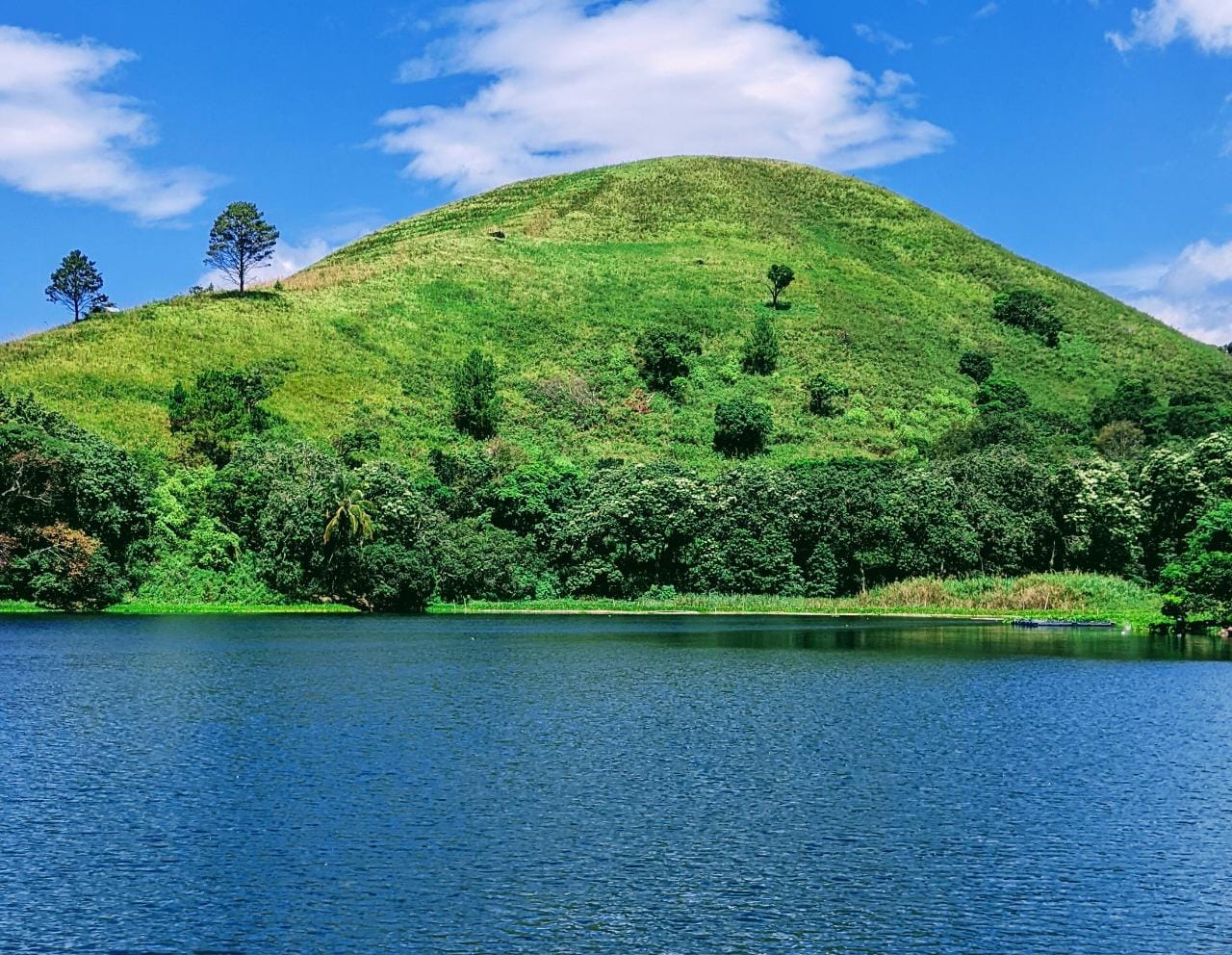
The name “Desa Paepira” reflects the village’s deep connection to its Batak roots, with “Desa” meaning village and “Paepira” likely deriving from the local dialect, carrying its unique significance. Like many villages, Desa Paepira boasts traditional Batak architecture, characterized by intricately carved wooden houses adorned with motifs and symbols. These structures are testaments to the village’s rich cultural heritage and serve as living reminders of its storied past.
Desa Paepira is a hidden gem waiting to be discovered by travellers seeking an authentic cultural experience amidst the beauty of North Sumatra. With its breathtaking landscapes, rich cultural heritage, and warm hospitality, it offers a glimpse into the soul of Indonesia and leaves a lasting impression on all who have the privilege of visiting.
Exploring the Geological Wonders and Cultural Treasures of Lake Toba
Lake Toba is an Earth’s geological history and the resilience of the communities that have thrived in its vicinity for centuries. Its unique combination of natural beauty and cultural richness makes it an enchanting destination for travellers seeking a memorable and immersive experience. Whether captivated by its geological origins, interested in the local culture, or simply seeking a tranquil escape, Lake Toba offers an unforgettable journey into the heart of Sumatra.
